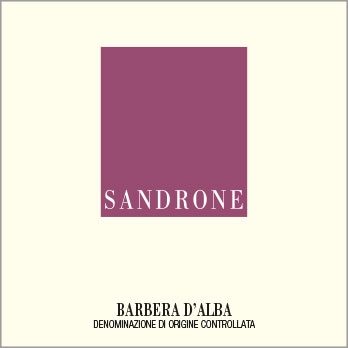
- Barbera d'Alba DOC
- 100%Barbera
- Spontaneous fermentation from indigenous yeasts
- Maceration and fermentation in open steel tanks
- Malolactic fermentation and ageing in French oak barrels of 500 liters
- 9 months of bottle ageing
- Vineyards in the villages of: Monforte d'Alba: Cascina Pe Mol
Novello: Ravera and Rocche di S. Nicola
Barolo: Albarella - Alcohol content: 13,5 %
- Recommended drinking time: 2024 - 2036
Barbera d’Alba 2021
Tasting notes
The warm weather in the last part of the 2021 vintage gave Barbera a potent, powerful frame on which hang the aromas and flavors of blackberries, blueberries, spice and earth notes.
The vibrant acidity keeps the wine light on its feet, dancing on the palate, where the flavors of black stone fruits and black raspberries envelop the taste buds.
There are notes of tannins from the tonneaux, which give a bit of structure but are in no way dominant.
The finish has notes of wood, minerals and a long fade that lingers in the mouth. Vibrant, fresh, crackling with the energy of ripe black fruits.
Ratings for the vintage 2021
James Suckling 91 points
Vinous 90 points
Wine Enthusiast 93 points
Evolution of the year 2021
The 2020-2021 winter was extremely snowy, with cumulative snowfalls in higher elevations of the Barolo zone reaching 3+ meters over 4 snowfalls. The weather warmed in March and there were 2 weeks of unseasonably warm temperatures before the early April frost event. The frost lasted about 48 hours, depending on the site, and affected all of Europe. The vines had already begun budding and damages were luckily limited to lower elevations and places where air currents pushed the cold air up the hillsides. Fortunately, none of our vineyards were affected.
Flowering was in the first week of June and coincided with the first period of real warmth. Thereafter, June and July were alternating warm-cool with well-timed rainstorms. The last significant summer rain was in mid-July, which also brought devastating hail to parts of Monforte, Novello and Roero.
Summer continued with little rainfall, contributing to what proved to be an excellent plant health and quality profile at harvest time.
In early September the night temperatures began to cool, and the plants received a bit of refreshment from a few rainstorms in the middle of September. General disease pressures were low in 2021 due to lack of humidity and good air circulation. Although there was little rainfall, this had virtually no effect on the grapevine, plants known for their capacity to resist.
The low yields, as expert viticulturists can tell, are a sure indicator of the high quality of the fruit.
There are significant temperature and climatic similarities between 2016 and 2021, including the high August heat. The biggest difference between the two growing seasons was water – in 2016, its relative abundance, versus its lack in 2021.
The harvest took place from September 21st until 30th.